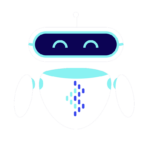The 11 Most Influential Programming Languages to Watch in 2025

Expert in Content Marketing and head of marketing.
Staying ahead in the ever-evolving world of technology requires understanding which programming languages are shaping the future. While most software developers gravitate toward a core set of familiar languages, there’s a vibrant ecosystem of alternatives powering everything from web apps to embedded systems. But how do you determine which programming languages are truly the most influential? And what criteria should you use to rank them?
Let’s dive into the definitive guide to the 100 programming languages you should know about in 2025, with a special focus on the 20 most vital ones for today’s developers.
How We Curated This List
Compiling a list of the top programming languages is no small feat. With hundreds in use globally, we made two key decisions to keep things practical and relevant:
- No ranking order: This is a curated collection, not a hierarchy. The languages are presented in no particular order—being listed first doesn’t mean “best.”
- Based on popularity and impact: Using reputable sources like the TIOBE Index, we focused on languages that have made a significant impact in the industry, ensuring you get a well-rounded view of both established and up-and-coming options.
The 11 Essential Programming Languages for 2025
Below is an in-depth look at the 11 most essential programming languages, complete with practical examples, trends, and actionable takeaways for professionals and organizations.
1. C
C is often hailed as the “grandfather” of modern programming languages. Its influence stretches across C++, C#, Objective-C, Java, Python, and JavaScript—many foundational concepts in these languages trace directly back to C’s design.
Why C Still Matters:
- Powers operating systems (like Linux and Windows)
- Essential for building compilers, drivers, and performance-critical utilities
- Foundational for embedded systems
Case Study:
UNIX, one of the world’s most influential operating systems, was re-implemented in C, which set the stage for portability and scalability in software.
Actionable Takeaway:
If you’re interested in systems programming or want a deep understanding of how computers work, learning C is a strategic investment.
2. Java
Java’s “write once, run anywhere” philosophy transformed software development. Thanks to the Java Virtual Machine (JVM), Java applications can run on any platform that supports the JVM—no recompilation required.
Real-World Applications:
- Android mobile development
- Enterprise web platforms
- Financial and scientific tools
Example:
Many popular Android apps and enterprise-scale systems rely on Java for their reliability and cross-platform capabilities.
Actionable Takeaway:
Java is a must-have for developers seeking a career in backend services, enterprise applications, or Android development.
3. Python
Python’s rise to the top is fueled by its readable syntax, flexibility, and huge ecosystem. It’s a top choice for beginners and experienced engineers alike.
Popular Use Cases:
- Data science and analytics
- Web app development
- Automation and scripting
- AI and machine learning
Case Study:
Netflix uses Python for everything from data analysis to monitoring and security automation, showcasing its versatility.
Actionable Takeaway:
Start with Python if you want to break into fields like data science, AI, or rapid prototyping. For a deeper dive into Python’s advantages, check out why Python is the ideal language for AI.
4. C++
Building upon C, C++ introduces object-oriented and generic programming while maintaining low-level access to memory. This makes it a top choice for high-performance applications.
Where C++ Excels:
- Game engines (e.g., Unreal Engine)
- Real-time systems and device drivers
- Financial trading platforms
Example:
Major game studios rely on C++ to create immersive, fast-paced experiences.
Actionable Takeaway:
C++ is invaluable for roles in gaming, systems programming, and any field where speed and efficiency are paramount.
5. C#
Developed by Microsoft, C# is tightly integrated with the .NET ecosystem, making it a go-to for Windows desktop apps and enterprise solutions.
Key Strengths:
- Cross-platform development via .NET Core and Xamarin
- Powerful for building Windows applications and games (Unity engine)
Case Study:
Unity, one of the most popular game development platforms, relies on C# for scripting.
Actionable Takeaway:
Master C# if you’re interested in Windows or game development—or working across multiple platforms with .NET.
6. JavaScript
JavaScript is the backbone of interactive web development. It's used on nearly every website for dynamic content and now, with Node.js, it powers server-side applications as well.
Applications:
- Web and mobile app development
- Server-side programming
- Real-time applications (like chat and collaboration platforms)
Example:
Single Page Applications (SPAs) like Gmail depend on JavaScript for seamless user experiences.
Actionable Takeaway:
Every developer should learn JavaScript—it’s essential for full-stack, front-end, and even some back-end roles. For practical guidance, explore our guide to building modern web apps with React.
7. PHP
PHP remains a staple for server-side web development, powering content management systems like WordPress and e-commerce solutions like Magento.
Strengths:
- Easy to learn for beginners
- Great for rapid web development
Example:
Facebook’s early infrastructure was built using PHP, demonstrating its scalability when properly managed.
Actionable Takeaway:
PHP is a practical choice for web developers, especially those working with content-heavy or e-commerce platforms.
8. R
R is purpose-built for statistical computing and data visualization, making it a favorite among statisticians and data analysts.
Uses:
- Advanced data analysis
- Statistical modeling
- Creating compelling data visualizations
Case Study:
Leading analytics firms use R for predictive modeling and reporting, especially in finance and healthcare.
Actionable Takeaway:
R is essential for professionals in data science or anyone handling complex statistical analyses. For more on the business impact of data science, read about the data science business revolution.
9. SQL
The backbone of database management, SQL (Structured Query Language) is indispensable for anyone working with data.
Applications:
- Data storage, retrieval, and manipulation
- Business intelligence and reporting
- Integration with cloud and virtualized environments
Example:
E-commerce companies use SQL to manage customer and transaction data across distributed systems.
Actionable Takeaway:
If you interact with data in any way, SQL is a must-have skill for querying and managing databases.
10. Go (Golang)
Created by Google, Go is recognized for its simplicity, fast compilation, and suitability for cloud-native and concurrent applications.
Where Go Shines:
- Cloud platforms and microservices
- Container orchestration (e.g., Kubernetes)
- Network services
Case Study:
Docker and Kubernetes, leading technologies in DevOps, are written in Go.
Actionable Takeaway:
Go is ideal for backend and cloud developers seeking performance and scalability.
11. Swift
Swift has quickly become the primary language for iOS and macOS development, thanks to its modern syntax and safety features.
Use Cases:
- Mobile apps for Apple platforms
- Desktop applications for macOS
Example:
Hit apps like Airbnb and LinkedIn’s iOS versions are crafted in Swift.
Actionable Takeaway:
If you plan to develop for Apple devices, Swift is a must-learn language.
Expanding Beyond the Top 20
While these languages form the backbone of modern software development, the world of programming is vast and ever-changing. Languages like Rust, Kotlin, TypeScript, MATLAB, and Dart are quickly gaining traction, offering new paradigms for safer, faster, and more maintainable code.
Additional Insights:
- Exploring AI POCs in Business reveals how experimental projects using emerging languages are fueling innovation.
- The open-source community is driving the adoption of languages tailored for machine learning, automation, and data processing.
Final Thoughts
The programming landscape in 2025 is more dynamic than ever. Whether you’re building enterprise systems, crafting mobile apps, or diving into data science, having a strong grasp of the top programming languages—and keeping an eye on emerging ones—will ensure you remain competitive and innovative.
Ready to take your skills to the next level? Explore more about the future of AI in business and unlock the potential of tomorrow’s technologies today.
Stay tuned as we continue to update this guide with fresh insights and new languages shaping the digital frontier!










